Look and Listen for a Broad-Tailed Hummingbird
Updated: Nov. 16, 2023
Learn how to attract, identify and observe a broad-tailed hummingbird in their high-elevation habitat throughout the western states.
On This Page
Broad-Tailed Hummingbird Identification
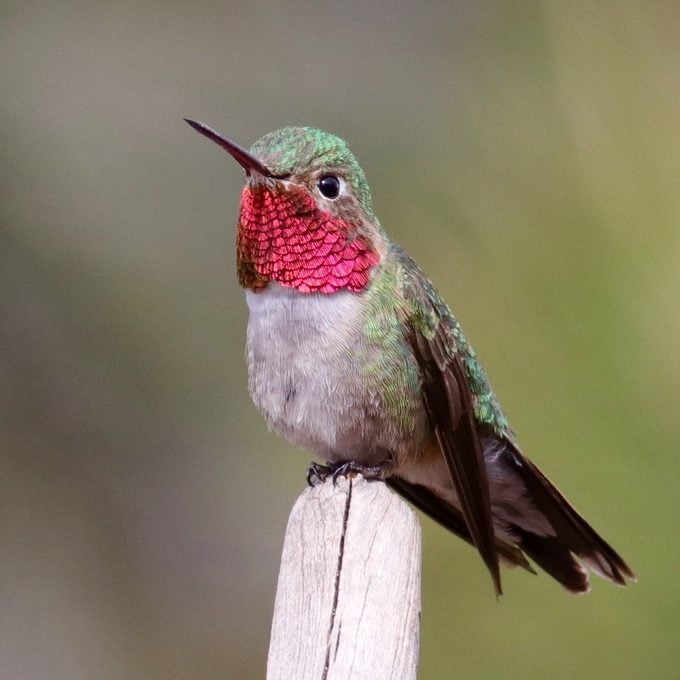
Despite its name, the male broad-tailed hummingbird’s bold throat first catches attention, not the tail. According to the Kaufman Field Guide to Birds of North America, adult males sport a showy rosy throat patch called a gorget. It’s a bright contrast to the white chest and green sides, back and crown. Their tail is slightly wider and longer than that of most other hummingbirds found in the U.S. and Canada, extending beyond the wingtips when the bird is perched and resting.
Females have buff colored sides and white tips on the outer tail feathers.
You won’t believe these jaw-dropping hummingbird facts.
Broad-Tailed Hummingbird Sounds
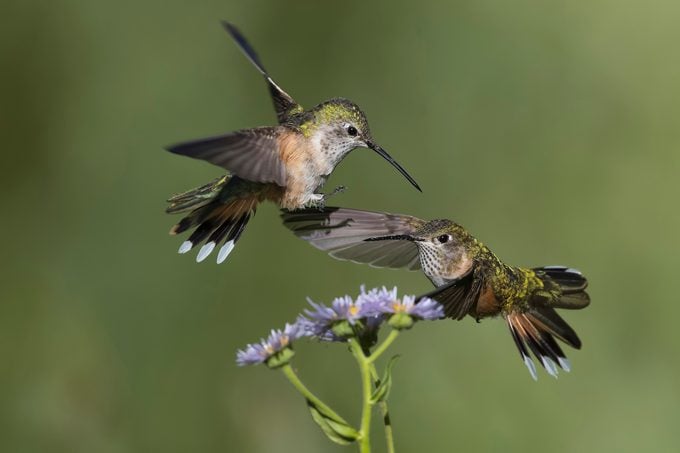
Hummingbirds aren’t usually known for the noises they make—but broad-tailed hummingbirds are loud visitors. Females keep up a constant vocal twittering, and males add a loud trill from their specialized wing feathers while in flight. “Once you learn their sound, you won’t forget it!” says David Mehlman, an environmental and biological consultant who served as director of the Nature Conservancy’s Migratory Bird Program. “The male broad-tailed hummingbird is the most distinctive-sounding of all North American hummingbirds.”
If you live in the mountains of the West or visit the region in summer, you’re bound to hear these very common and abundant hummingbirds, maybe even before you see them.
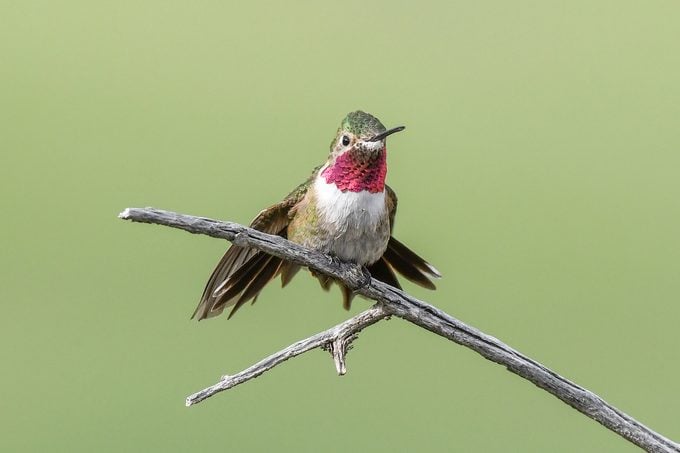
Birding experts Kenn and Kimberly Kaufman agree. “The male broad-tailed hummingbird of the Rocky Mountain region has an especially impressive sound. You can always tell when an adult male broad-tail flies past, because of the high, metallic trilling of his wings.”
What Do Broad-Tailed Hummingbirds Eat?
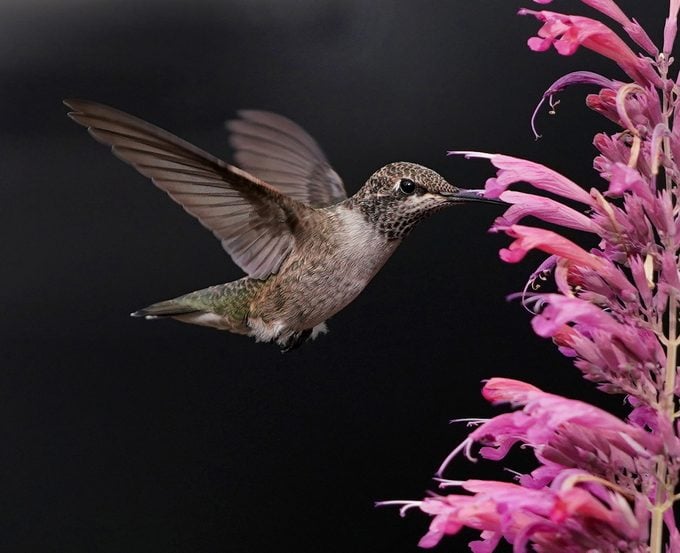
The plentiful nectar of alpine meadow wildflowers draws crowds of broad-tailed hummingbirds to the Rockies, Sierras, Guadalupes and other ranges, spanning from Texas to Montana. Insects and tree sap round out their regular menu of high-elevation nectar blooms. They also visit backyard sugar-water feeders.
Nesting Habits
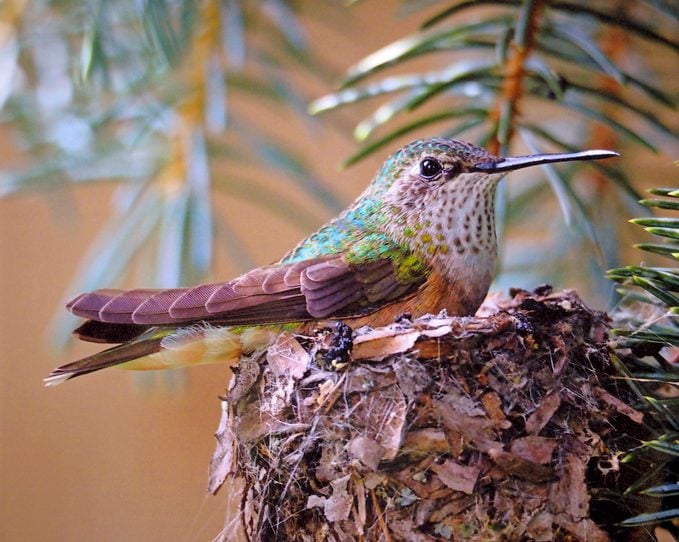
Even in the mountain breeding grounds, broad-tailed hummers don’t form pair bonds. Males may mate with several females. The tiny cup-shaped nests are typically constructed in evergreens or dense thickets for protection from chilly temperatures at high elevations. Females lay two small white eggs.
Territorial Behavior at Feeders

Hang a few feeders instead of one, because these territorial birds come in droves. Males tend to perch on high vantage points near feeders, keeping a lookout for other males. Crowds of females and, later in the season, juveniles swarm the feeders from dawn to dusk.
Broad-Tailed Hummingbird Range and Migration
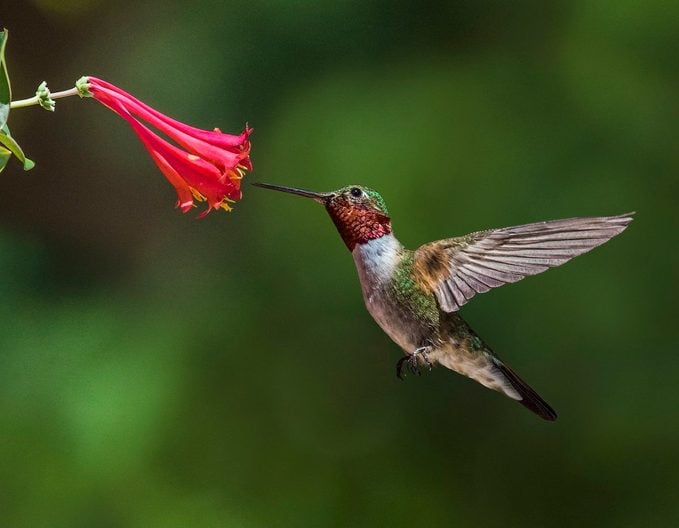
During migration to and from Mexico, broad-taileds turn up at lower elevations, sometimes even visiting cities. David’s home in New Mexico is about a mile above sea level, but broad-taileds visit only when passing through. “If I want to see them in summer, I have to head up to 8,000 or 9,000 feet,” he says.
Gardeners who live in the mountains or in the migration path of broad-taileds can attract these fliers with the usual suite of hummingbird flowers, such as penstemon, red hot poker, trumpet honeysuckle, salvia and bee balm. The red birds in a tree shrub (Scrophularia macrantha, Zones 4 to 9) attracts broad-tailed hummingbirds where it grows wild in the Southwest. This favorite native plant produces nectar-filled flowers that look just like little birds.
Several types of western hummingbirds, including broad-taileds, are now expanding east, showing up in the Gulf States in fall and winter. While no one knows exactly why, David jokes, “Maybe it’s the gumbo.”
Check out the best red flowers that attract hummingbirds.
Sources
- David Mehlman, former director of the Nature Conservancy’s Migratory Bird Program
- Benedict G. Hogan, Mary Caswell Stoddard. Synchronization of speed, sound and iridescent color in a hummingbird aerial courtship dive. Nature Communications, 2018; 9 (1) DOI: 10.1038/s41467-018- 07562-7
- Dive-bombing for love: Male hummingbirds dazzle females with a highly synchronized display
- The Cornell Lab of Ornithology’s All About Birds online
- A.C. Bent, Life Histories of North American Cuckoos, Goatsuckers, Hummingbirds, and Their Allies (Dover Publications reprint of Smithsonian Institution, Government Printing Office, 1940, National Museum Bulletin #146)
- The Texas Breeding Bird atlas
- The Kaufman Field Guide to Birds of North America



















